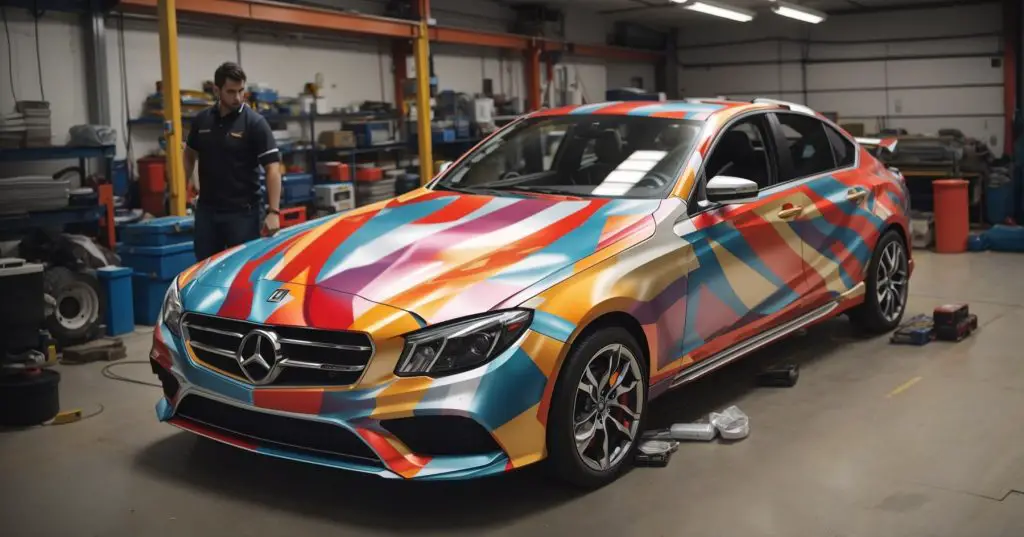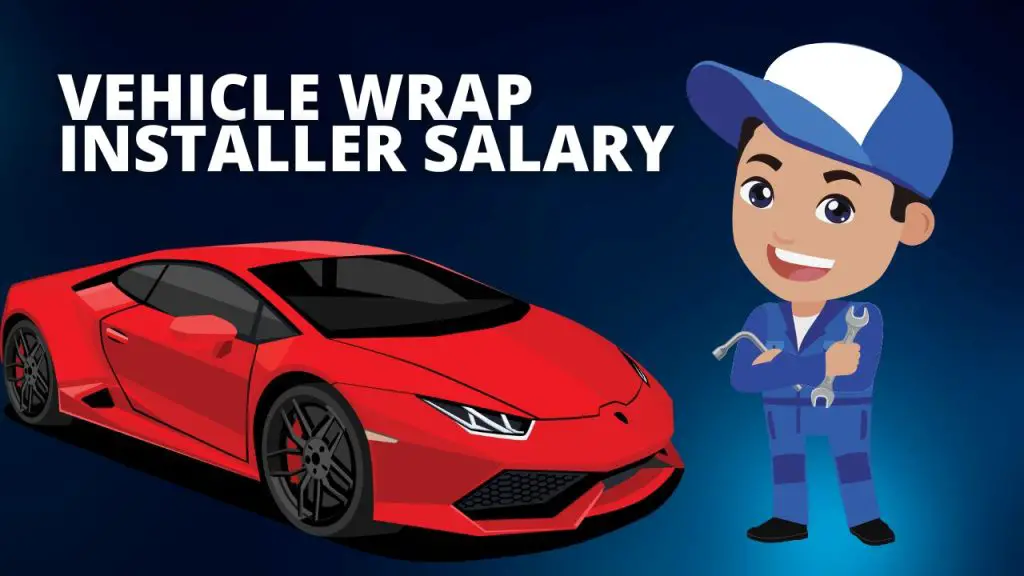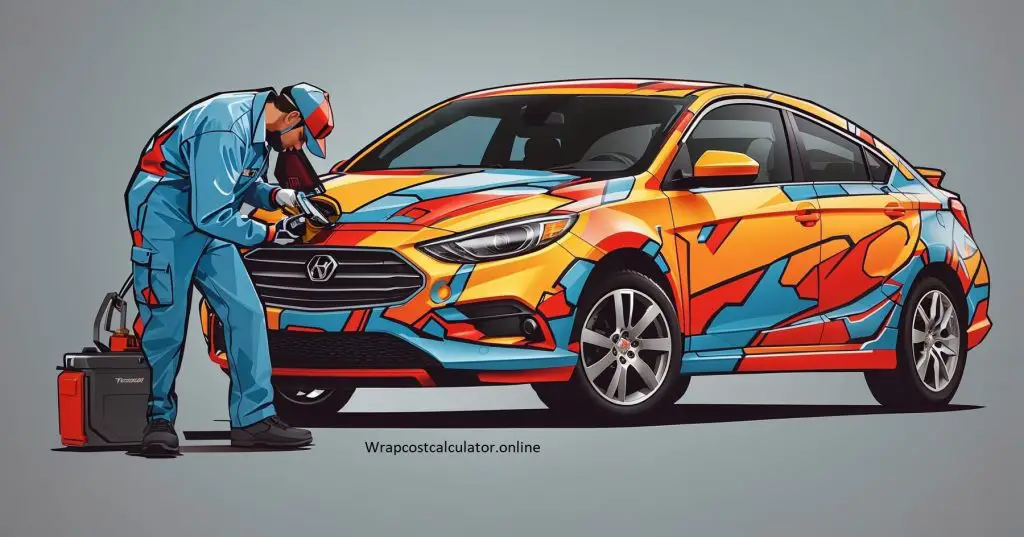Vehicle wrap installers are the skilled professionals responsible for applying vinyl graphics and decals to vehicles, transforming their appearance. If you’re intrigued by this dynamic field and considering becoming a vehicle wrap installer, this article will guide you through the key aspects of the profession, including salary, training, certification, and essential skills.
What Does a Vehicle Wrap Installer Do?
A vehicle wrap installer’s primary role is to apply vinyl wraps, graphics, and decals to vehicles. This involves meticulous preparation, precise measurement, cutting, and skilled application. These professionals need a keen eye for detail and a steady hand to ensure flawless results.
Earning Potential as a Vehicle Wrap Installer
The earning potential as a vehicle wrap installer can vary widely based on several factors, including your location, experience, skill level, and the demand for your services. Vehicle wrap installation is a specialized field within the broader category of graphic design and installation, and it involves applying vinyl wraps to vehicles to change their appearance or promote a brand.

- Location Matters: Urban areas offer more clients and higher potential income. Cost of living affects your earnings.
- Skills Impact Earnings: Experience and skill level drive rates. Quality work builds reputation and higher pay.
- Demand Affects Rates: Trends in advertising, customization, and marketing influence what you can charge.
- Client Type Matters: Premium clients (corporate or luxury vehicles) may pay more for top-notch designs.
- Freelance vs. Employment: Freelancers set rates, diverse projects. Employees enjoy stability but may earn less per project.
- Network for Success: Effective marketing and networking lead to more opportunities and higher income.
- Pricing Strategy Counts: Rates can be per square foot, per vehicle, or by design complexity. Research local norms and industry standards.
Vehicle Wrap Installer Salary

As the saying goes, “Do what you love, and you’ll never work a day in your life.” Vehicle wrap installers epitomize this by transforming their passion for cars into a rewarding career. According to information from the U.S. Bureau of Labor Statistics (BLS), the average salary for a skilled vehicle wrap installer ranges from $35,000 to $65,000 per year, depending on experience, location, and the complexity of projects undertaken. This enticing earning potential makes it an attractive choice for automotive enthusiasts and creative individuals alike.
To become a car wrap installer, you’ll generally require a combination of training, education and previous practical experience in graphic designing, wrap printing, and the customization of vehicles. Additionally, it would be best if you had a keen concentration on details, manual dexterity, and the ability to think on your feet.
In addition to a salary, vehicle wrap installers may also receive benefits such as health or Car insurance retirement plans and the option of paid vacation time. Some wrap installers can earn additional money through bonuses or commissions, depending on the number of wraps they have installed or the revenue they make.
The process of installing a vehicle wrap typically involves the following steps:
- Clear and prep the car’s surface: The process involves taking dust, dirt and other particles off the vehicle’s surface and ensuring it’s perfectly smooth and uniform.
- Cut and measure vinyl wrap: The vinyl wrap is usually cut to the desired size using a computer-controlled cutting machine.
- Heating the vinyl wrap: The vinyl wrap is usually heated using an electric heat source or another heating source to become more flexible and easy to use.
- Apply the wrap: Wraps of vinyl on the vehicle’s exterior. It is applied to start from one end and gradually move towards the other. It is then stretched, then put in place with different tools, such as the scraper, squeegee and heat gun.
- Trim and complete the wrap: After the wrap is placed, The installer will trim off any excess vinyl and add any finishing touches, including closing the corners to stop peeling.
Installing a vehicle wrap can be a challenging and time-consuming process, but with the right skills and tools, it can also be a rewarding and lucrative career.
Professioanl Vehicle Wrap Installer Certificte
Becoming a Certified Vehicle Wrap Professional involves several steps, from gaining the necessary skills and knowledge to obtaining a certification recognized by the industry.

- 3M Preferred Graphics Installer: Offered by 3M, this program focuses on installation skills using 3M materials.
- Avery Dennison Certified Wrap Installer: Avery Dennison offers a certification program for professional wrap installers.
- PDAA Master Certified Installer: The Professional Decal Application Alliance (PDAA) offers a certification program that covers various aspects of graphics installation, including wraps.
The Tasks Performed by a Car Wrap Technician
Here’s a list of tasks that a vehicle wrap installer typically performs:
- Surface Prep: Thoroughly clean and prep the vehicle for optimal vinyl adhesion, removing imperfections.
- Material Cutting: Measure and cut vinyl sheets precisely to match vehicle contours.
- Vinyl Application: Skillfully apply vinyl using specialized tools for a seamless, bubble-free finish.
- Heat Application: Use heat guns to stretch and mold vinyl around curves and edges.
- Trimming and Edging: Neatly trim excess vinyl and create clean edges for a polished look.
- Graphics Alignment: Align graphics precisely for designs that match vehicle features.
- Detailing and Finishing: Inspect and perfect the wrap, smoothing edges and addressing imperfections.
- Window Tinting: Accurately apply window tint film for enhanced aesthetics and privacy.
- Partial Wraps: Focus on specific areas like hoods or doors, blending with original paint.
- Full Wraps: Cover entire vehicle surface with expertly fitted vinyl.
- Consultation: Communicate with clients to understand design preferences and vision.
- Maintenance Guide: Educate clients on proper wrap maintenance and cleaning techniques.
- Quality Check: Thoroughly inspect the wrap to ensure high standards of quality and durability.
- Client Satisfaction: Address concerns, answer questions, and ensure clients are delighted with the final result.
Conclusion
ecoming a vehicle wrap installer opens the door to a vibrant and rewarding career. As you embark on this path, remember that every curve, corner, and window presents a canvas for your imagination. With creativity, skill, and the right training, you can turn ordinary vehicles into extraordinary works of art or powerful marketing tools.
FAQs
Is vehicle wrap installation a lucrative career option?
Absolutely! Skilled vehicle wrap installers can earn a substantial income, ranging from $35,000 to $65,000 per year. Professional Wrap technician, earns on average $30-$35 per hour.
What is the significance of wrap certification?
Wrap certification enhances your professional image and opens doors to premium projects, showcasing your commitment to excellence.
How can I learn the art of wrap installation?
Enroll in dedicated wrap training programs that cover material selection, surface preparation, and application techniques.
How long does it take to become a skilled vehicle wrap installer?
The time it takes to become a skilled vehicle wrap installer can vary based on factors such as your prior experience, the intensity of your training, the frequency of practice, and your ability to grasp the techniques involved. Generally, it may take 6 months to 2 year to reach a professional level.